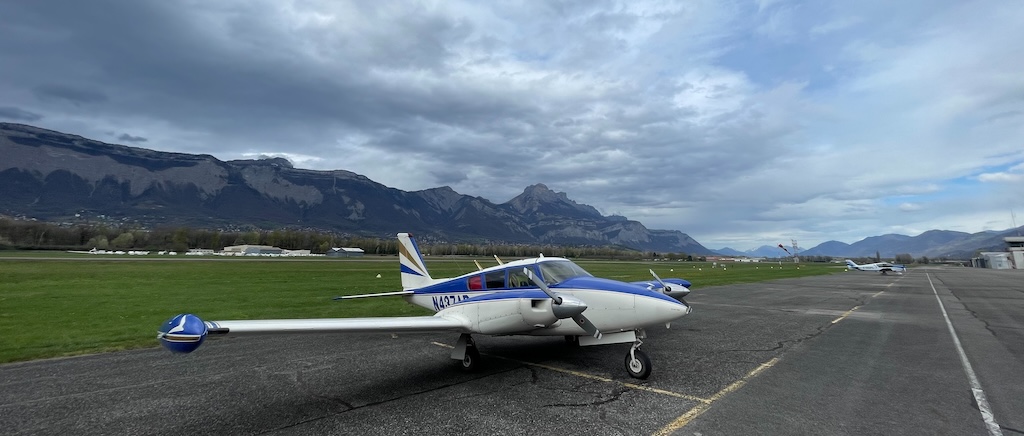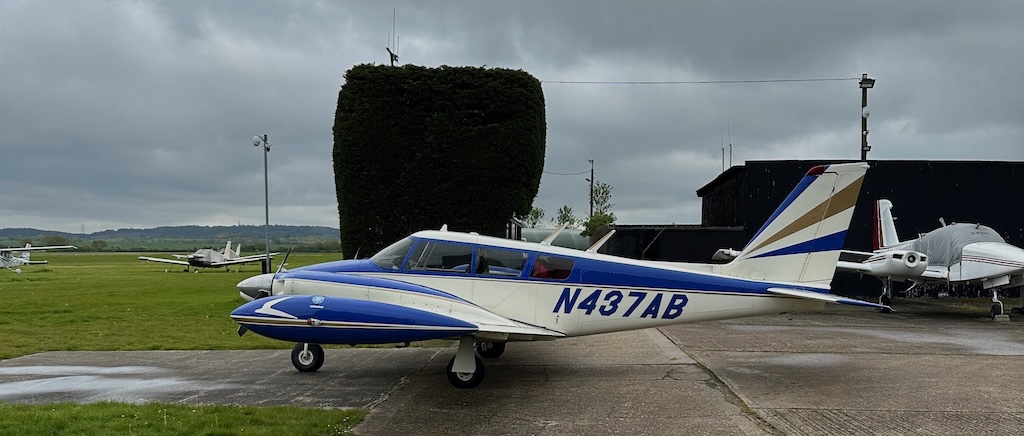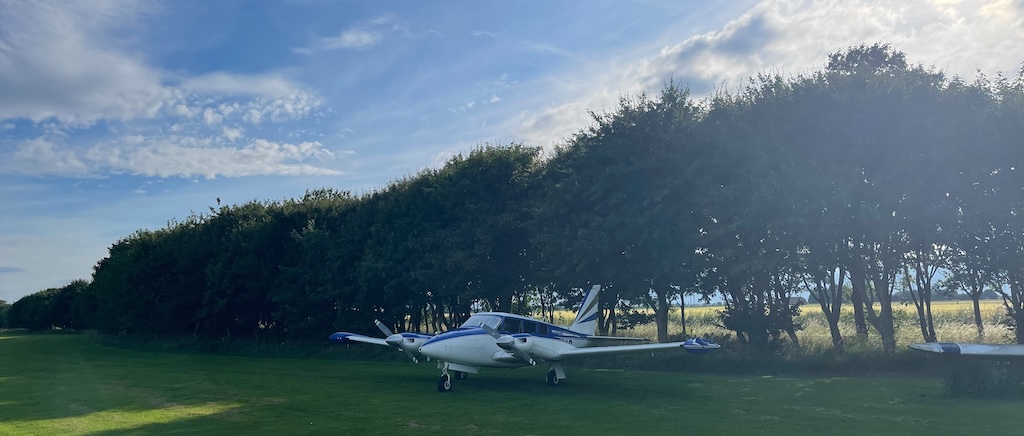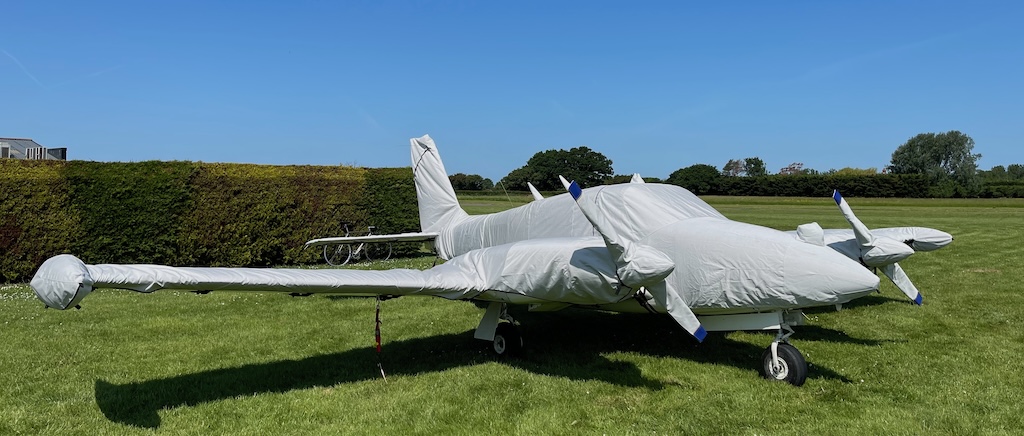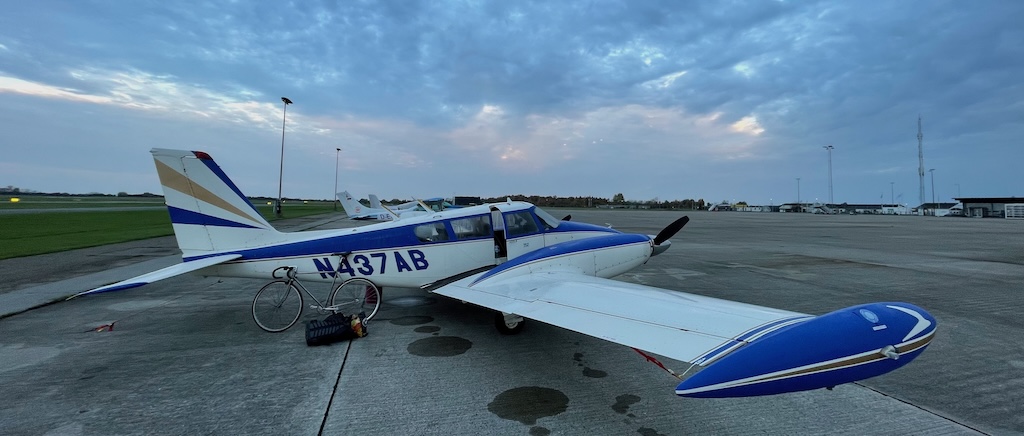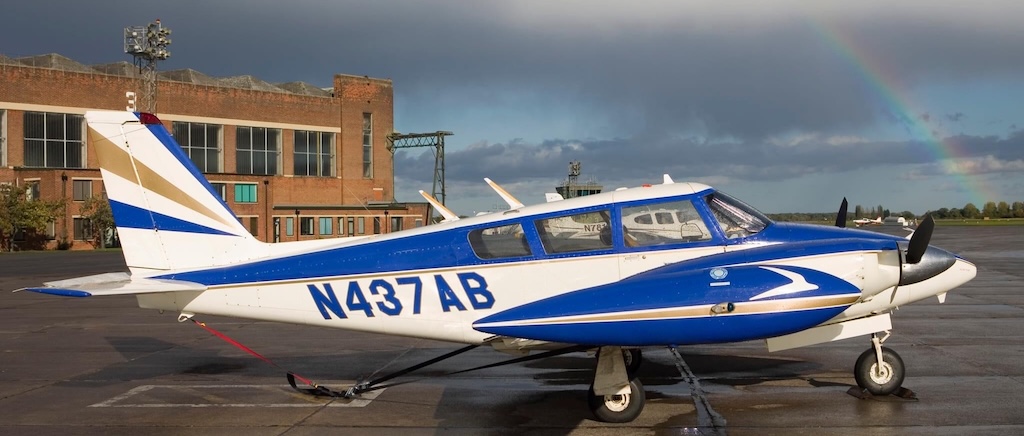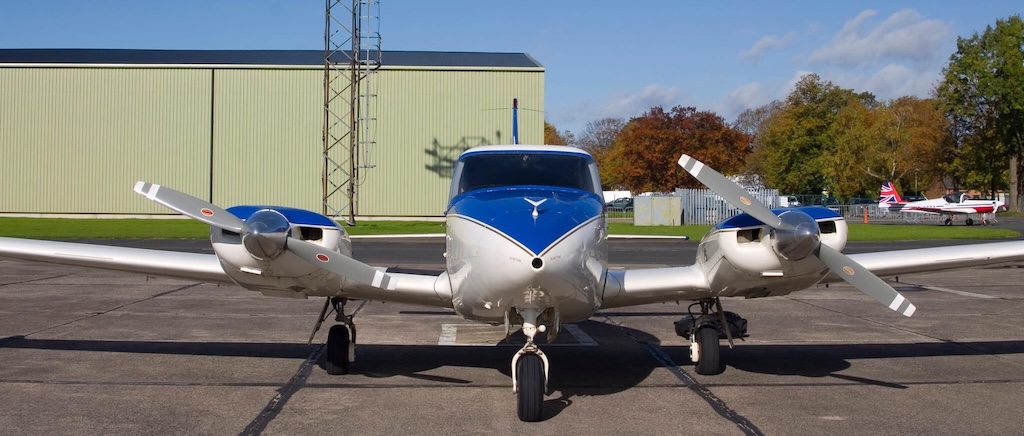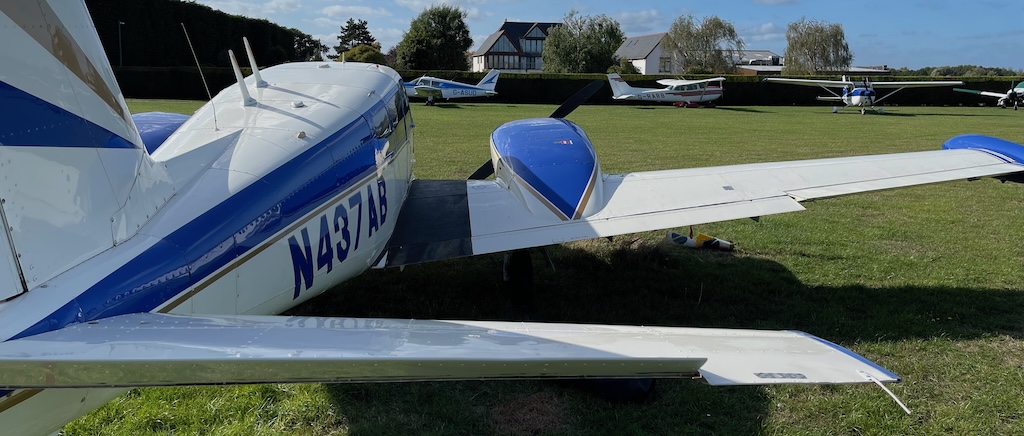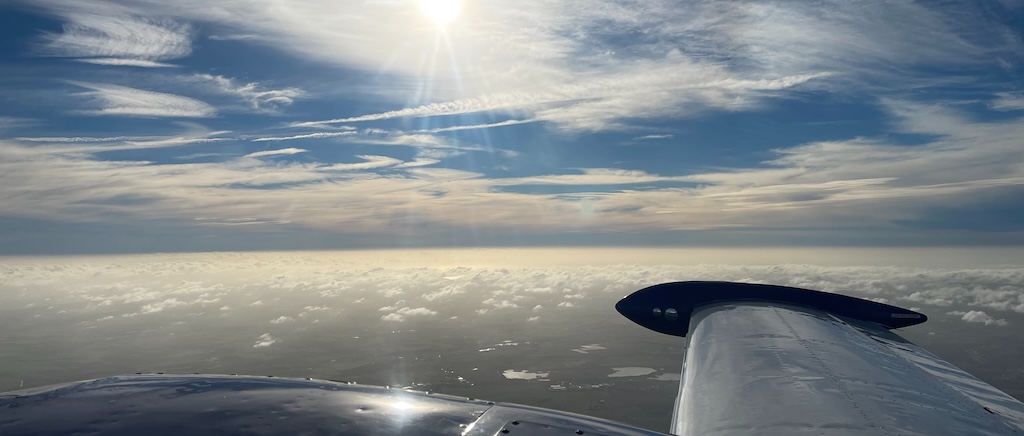Meet N437AB, a 1966 Piper PA30 Twin Comanche built for those who crave the open skies and the thrill of discovery.
Adapted for endurance with its 154USG of useable fuel giving 1400NM of range (LOP), N437AB enables unmatched adventures
It is an amazing plane that allows me to cover long distances with the utmost confidence.
It's currently based and maintained at Thurrock.
oOoMore than once since owning N437AB, people have stopped me to ask if I knew Anthony Beswick (the "AB" in the registration). Stories about him abound. Apparently, in addition to the 154 USG of fuel the plane can already take, he removed the back seats and installed a ferry tank for his trips (or perhaps multiple trips) between Africa and Australia. With this setup, he could fly for more than 20 hours without refueling. I’m not sure how many of these epic journeys he made, but they certainly established a legacy—for both Anthony and the plane!
Anthony sadly passed away in 2006, and the plane reportedly sat in storage for the next 13 years. Thankfully, before that storage, the engines and props were zero-timed, and the engines pickled. In 2019, a South African pilot named Hennie Roets bought the plane from Anthony’s estate with the intention of parting it out—mainly for the pristine engines, which he wanted for a helicopter. However, he noticed that the plane was in remarkable condition and wisely decided against dismantling it.
Hennie sold it to a farmer and businessman named Lood Engels, who used it to commute between his farms in South Africa and Botswana for two years. In that time, Lood logged around 115 hours, more than enough to prove the plane wasn’t a "hangar queen." However, he found it difficult to handle the plane alone on his gravel and grass farm strips and felt the enormous fuel capacity was overkill for his needs. So, in 2022, he traded the Twin Comanche for a single Comanche.
That’s when I—Adriaan Pelzer, an ex-South African living in the UK—noticed the plane on the market. I’d been wanting to upgrade to a light twin for my frequent trips across expanses of water that were a little too broad for my liking in a single. At the time, I co-owned a share in a Piper Arrow—a fantastic plane in every respect—but flying it over water (or at night) always gave me pause.
I took my time, speaking to South African pilots and especially the Comanche community, which is quite active in South Africa and connected through a Telegram group. One name that kept coming up was Eric Cook, a highly regarded Comanche maintenance engineer.
Eric conducted the pre-buy inspection for me and concluded that the plane had very good bones but needed attention to some superficial issues. I made the call and bought the plane.
Over the next six months, Eric performed extensive maintenance, including replacing all fuel and high-pressure hoses, control cables, and upgrading the VHF stack to 8.33 kHz spacing and the transponder to Mode S. Along the way, we identified and resolved countless smaller issues. By the end of it, we’d nearly doubled the plane’s purchase price—once you factored in the ferry costs and VAT to bring it into the UK!
Of course, practicality wasn’t the only reason I bought a plane halfway across the world. The "cherry on top" was the chance to ferry it from South Africa to the UK and get to know it inside out along the way.
Earlier that year, I’d spoken about my plans with my good friend Markus Mollmann, a very accomplished pilot and owner of Bushpilot Adventures. I often rent a Cessna 182 from him when visiting South Africa. Markus was keen to join the ferry flight, and we struck a deal: he’d accompany me for free if I covered all costs and let him act as PIC for half of the hours. With his extensive flying experience, especially ferrying planes across Africa, Markus was an essential part of the trip.
There was, of course, a LOT of preparation over the following months, but that’s a longer story for another time. What matters is that on September 6, 2022, we set off from Lanseria, South Africa. Our route took us through Malawi, Kenya, Egypt, Greece, Croatia, Italy, Mallorca, and finally to the UK. A week and a day later, we landed, having completed a life-changing journey.
Since then, I’ve used N437AB to commute between the UK and Denmark and taken it on several long European trips. Additional maintenance has included a full gear overhaul and motor replacement in 2023, as well as new, continuous-duty fuel boost pumps—far smaller and more reliable than the old stock ones.
Every flight in this plane reminds me why it’s a "keeper." It’s an absolute joy to fly and has proven incredibly reliable. To top it off, the Twin Comanche beats many similarly powered singles in operating costs. Its engines can comfortably lean to sip just 13 gallons per hour combined (6.5 gph each) with only a modest reduction in speed. The airframe is marvelously efficient, though it does require practice to master short landings (like at Thurrock, where I’m based). That only makes it more satisfying when you finally nail every approach.
